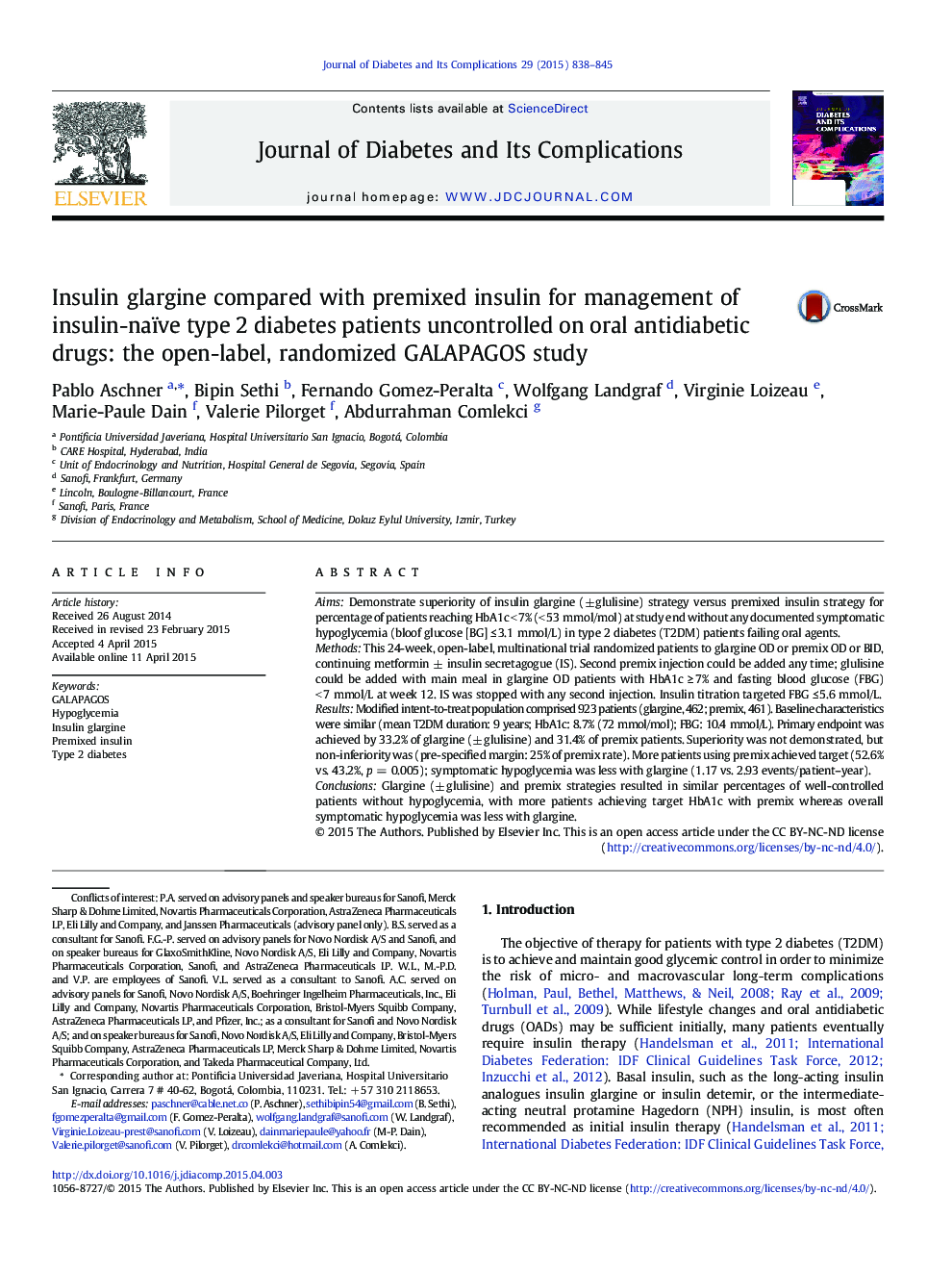| Article ID | Journal | Published Year | Pages | File Type |
|---|---|---|---|---|
| 5902266 | Journal of Diabetes and its Complications | 2015 | 8 Pages |
AimsDemonstrate superiority of insulin glargine (± glulisine) strategy versus premixed insulin strategy for percentage of patients reaching HbA1c < 7% (< 53 mmol/mol) at study end without any documented symptomatic hypoglycemia (bloof glucose [BG] â¤Â 3.1 mmol/L) in type 2 diabetes (T2DM) patients failing oral agents.MethodsThis 24-week, open-label, multinational trial randomized patients to glargine OD or premix OD or BID, continuing metformin ± insulin secretagogue (IS). Second premix injection could be added any time; glulisine could be added with main meal in glargine OD patients with HbA1c â¥Â 7% and fasting blood glucose (FBG) < 7 mmol/L at week 12. IS was stopped with any second injection. Insulin titration targeted FBG â¤Â 5.6 mmol/L.ResultsModified intent-to-treat population comprised 923 patients (glargine, 462; premix, 461). Baseline characteristics were similar (mean T2DM duration: 9 years; HbA1c: 8.7% (72 mmol/mol); FBG: 10.4 mmol/L). Primary endpoint was achieved by 33.2% of glargine (± glulisine) and 31.4% of premix patients. Superiority was not demonstrated, but non-inferiority was (pre-specified margin: 25% of premix rate). More patients using premix achieved target (52.6% vs. 43.2%, p = 0.005); symptomatic hypoglycemia was less with glargine (1.17 vs. 2.93 events/patient-year).ConclusionsGlargine (± glulisine) and premix strategies resulted in similar percentages of well-controlled patients without hypoglycemia, with more patients achieving target HbA1c with premix whereas overall symptomatic hypoglycemia was less with glargine.
